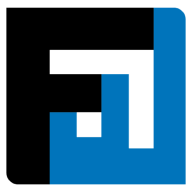The Internet of Things (IoT) has revolutionized the way organizations procure goods and services. By leveraging digital data and analytics, businesses can now make more informed decisions, streamline operational processes, and reduce costs more efficiently. IoT’s impact on procurement has the potential to create even more value for businesses in the future. This article explores the potential of IoT in procurement, its benefits and some key considerations.
Utilizing IoT to Enhance Procurement Strategies
Using IoT in the procurement process can help improve profitability, drive down costs, and reduce the total cost of ownership (TCO). IoT-enabled devices can provide real-time data, which can be used to predict product demand and availability. This, in turn, can provide greater visibility into procurement processes and offer organizations better insight into their supply chain dynamic.
In addition, IoT enabled devices can automate some procurement-related processes such as order fulfillment, keeping accurate records of stock, and tracking inventory levels. Automation enables faster product delivery and better control over supply chain costs. As such, IoT has the potential to have a much larger impact on the procurement process than manual methods of procurement.
IoT can also help organizations to identify potential risks in the supply chain, such as delays in delivery or unexpected changes in demand. By providing real-time data, organizations can quickly identify and address any issues that may arise, helping to ensure that the procurement process runs smoothly and efficiently.
The Benefits of IoT in the Procurement Industry
There are numerous benefits that IoT can bring to procurement operations. One of the key benefits is increased efficiency. By enabling faster and smoother operational processes such as order processing, firms can save time, improve their efficiency and reduce errors.
IoT also enables quicker decision-making when it comes to sourcing and procuring products or services. By leveraging real-time data, organizations can identify the most advantageous deals with greater accuracy and in less time. This results in more informed decisions and better bargain power.
Furthermore, IoT can help organizations track their inventory better while reducing wastage of precious resources. Connected devices allow enterprises to monitor stocks, set restocking thresholds and track fulfillment in real-time. This ensures that supplies are never under- or overstocked.
In addition, IoT can help organizations reduce their carbon footprint by optimizing their supply chain operations. By leveraging data from connected devices, firms can identify areas of inefficiency and wastage, and take steps to reduce their environmental impact. This can help them meet their sustainability goals and improve their reputation.
Optimizing Procurement Performance with IoT
Here are a few examples of how IoT is optimizing procurement:
- Increased visibility: For example, IoT-enabled sensors on delivery trucks can provide real-time updates on their location and delivery status. This information can be used by procurement teams to monitor the progress of shipments, anticipate delivery times, and make adjustments as needed to ensure that deliveries are made on time.
- Improved efficiency: For example, the use of IoT-enabled devices such as smart labels and RFID (Radio-Frequency Identification) tags can automate the tracking of inventory levels and movement. This information can be used to optimize stock levels, reducing the need for manual checks and freeing up procurement staff to focus on more strategic activities.
- Enhanced collaboration: For example, IoT devices can be used to connect different parts of the supply chain, allowing for real-time communication and collaboration between suppliers, manufacturers, and logistics providers. This can help to reduce lead times, improve delivery accuracy, and ensure that everyone is working towards the same goals.
- Predictive analytics: For example, IoT-enabled devices can collect data on usage patterns, wear and tear, and other factors that can impact product demand. This information can be analyzed to provide predictions about future demand, allowing procurement teams to make informed decisions about future purchases and manage their inventory more effectively.
- Risk management: For example, IoT-enabled sensors on critical infrastructure or equipment can provide real-time monitoring, allowing organizations to identify and mitigate risks before they become major problems. This can help to reduce the likelihood of disruptions or other issues in the supply chain.
These are just a few examples of how IoT is impacting procurement and improving efficiency, collaboration, and decision making. By leveraging the power of IoT, organizations can gain a competitive advantage and better manage the procurement process in the future.
In conclusion, the Internet of Things (IoT) is revolutionizing the way procurement is done by providing real-time data, increased visibility, improved efficiency, enhanced collaboration, and predictive analytics. The use of IoT-enabled devices and processes can automate many tasks and streamline procurement processes, reducing the time and cost of procurement activities. IoT can facilitate communication and collaboration between different parties in the procurement process, allowing for a more integrated and efficient approach. The real-time data generated by IoT devices can be analyzed to provide insights into supply chains, demand patterns, and potential risks, helping procurement teams to make better decisions and respond quickly to any issues that arise. In short, IoT has the potential to bring significant benefits to procurement and organizations that leverage this technology will be better positioned to manage the procurement process in the future.
At FactWise, we are committed to building truly distinctive procurement software solutions that delight users and provide sustainable positive impact to the organizations we serve. We do this by providing transparency and insights to leaders (31% increase in governance), streamlining and automating processes to improve efficiency (20% increase in efficiency), and driving bottom-line impact by unlocking savings potential (25% cost reduction for direct spend).
